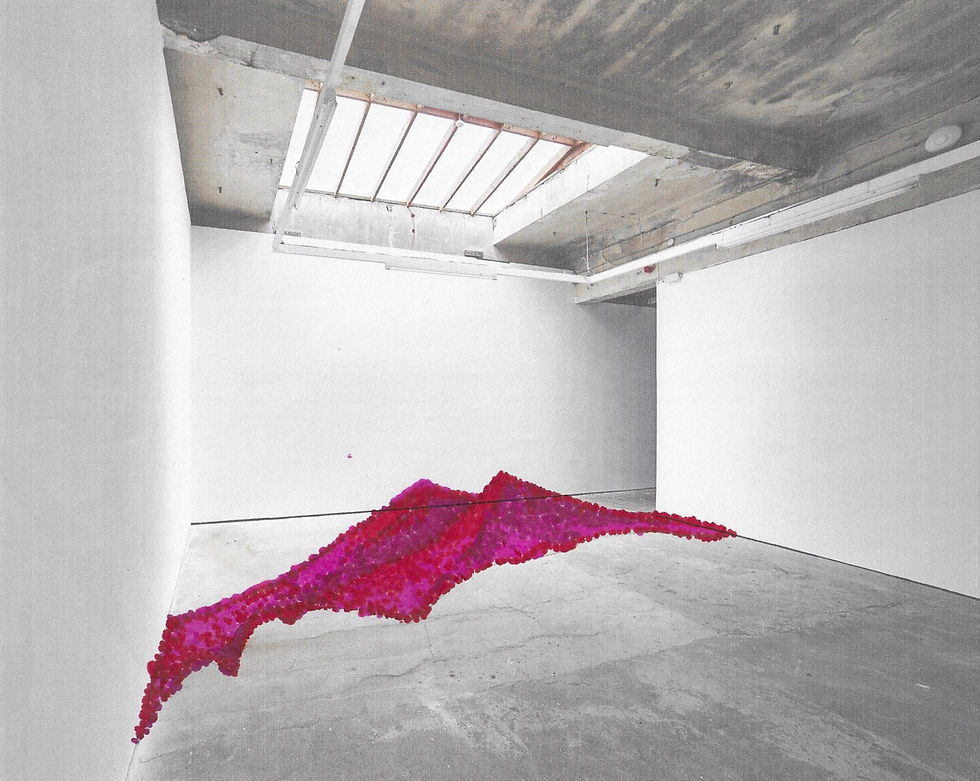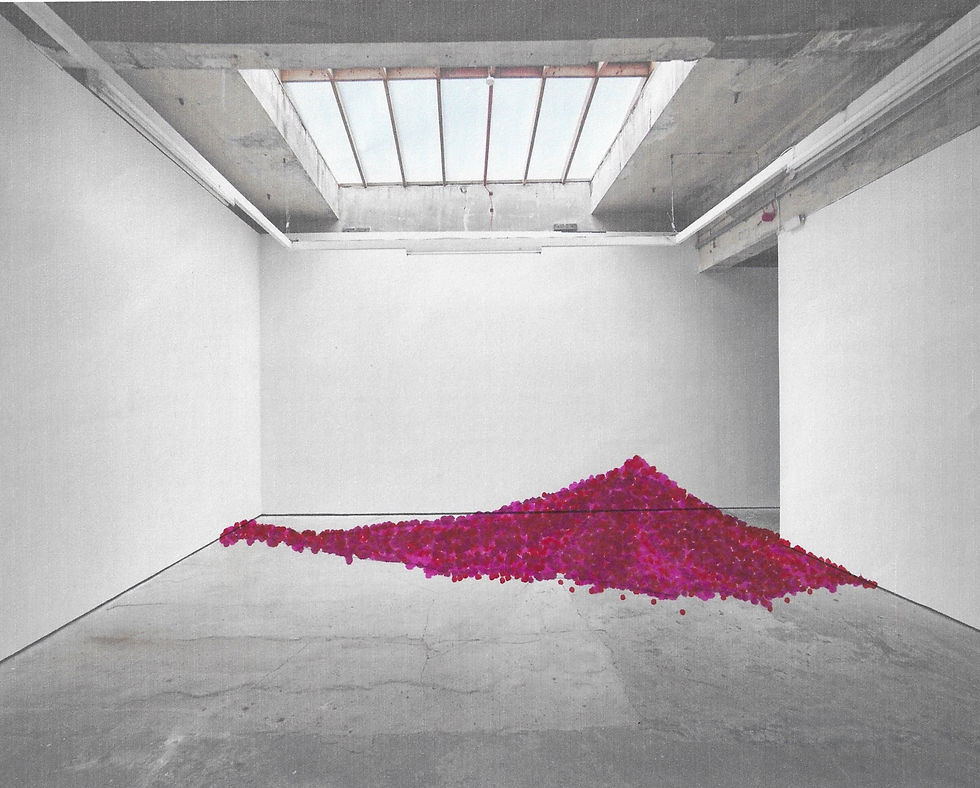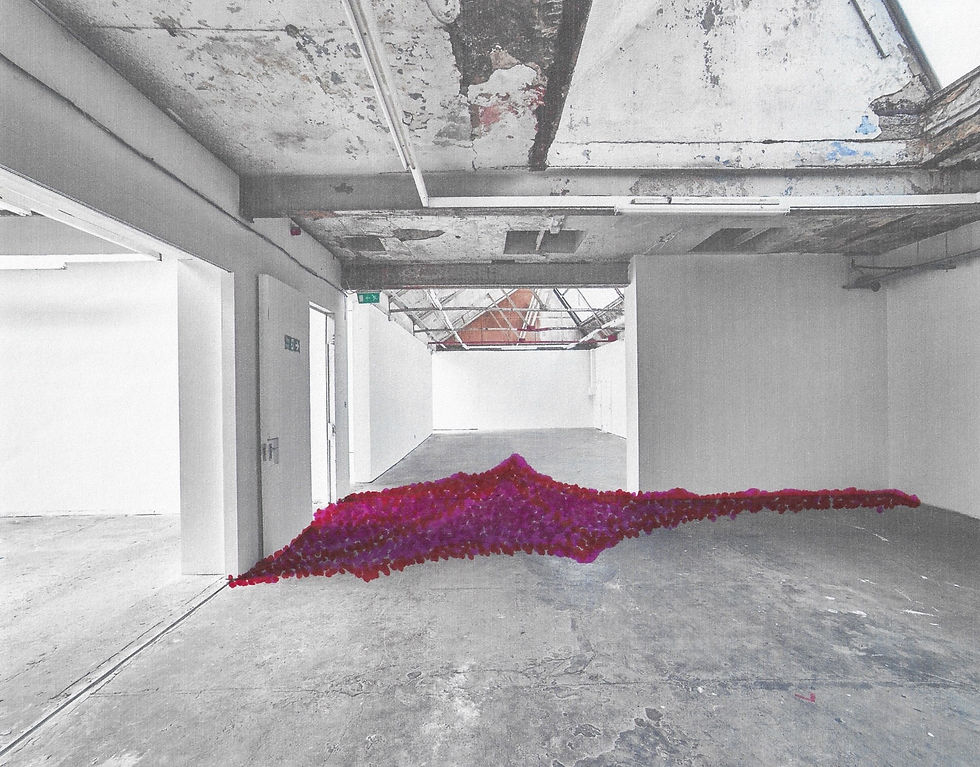 |  |
|---|---|
 |  |
 |  |
 |  |
 |  |
|---|---|
 |  |
 |  |
 |  |
CONSTANZA MARQUES GUEDES
Degree Show work
Upon finishing reading Sustainability, Feminist Visions, and the Utopian Tradition (1995) by Daphne Spain, and Judith Butler’s Gender Trouble: Feminism and the Subversion of Identity (1990), it became clear to me that issues regarding conceptions and understandings of ‘nature’ and ‘women’ often run parallel to each other. In some instances, they also overlap and share the same ideological foundations. These two literary works - together with others that you can read more about on this website under my ‘Critical Analysis Section´ - have allowed me to partly uncover some of the reasoning behind many of the institutionalised frameworks of approaches used in interpreting and dealing with our natural world and the female realm of society. Both nature and women are constructed and fashioned on a daily basis accordingly, I argue.
As such, and for the Degree Show, I decided to create an interactive art project that tackles and highlights such issues. It was important for me for it to be interactive as I am a firm believer that these issues are often perpetuated by active members of our society. Whilst scrutinizing the “oppression of women and the domination of nature”, which has been very troublesome and often unjustified by Western Philosophical views, I aimed to further explore the issues at hand while allowing the viewers to reach their own conclusions.
I believe nature is being challenged by our own existence through systematic manipulation of and interference with natural systems. Women too, constantly must accommodate the imposition of patriarchy in society in order to survive in what is a male-dominated world. The capitalisation and colonization of women’s bodies and nature, all “alter the natural systems and keep them in a societally desired state”. The fantasy or fetish of that desire is simply “constructed on itself as a contingent” and it only survives given today’s political and socio-cultural systems. Western conceptual seeds present in understandings of ‘nature’ and ‘women’ can only be fully understood when evaluated as part of the political framing in which they operate. Given this, the references used for my work are the ones that most visibly touch on such topics. As Judith Butler stated “the notion of gender is a performative one”, which means it changes and adapts to the environment one lives in, which is very similar to the concept of sustainability held by the West.
On top of this, I have also been exposed to different policies regarding sustainability and feminism. I have experienced different governmental approaches to such issues, and I have seen how it feels to be a woman in different societies and cultures – not just from an overall ‘European’ perspective – but too from particular and different western perspectives that prevail within Europe. It is my understanding that understandings and approaches to sustainability and feminism are more-often-than-not symbiotic and interlinked, in ways that fit the Western overall men-dominated framework of operation. A connection and link I aim to explore through my art, as a self-proclaimed eco-feminist. More precisely as I draw on conceptualisations of sex and gender when exploring and critically assessing the connections between humans and the natural world.


Option number I,
Sketch of the installation
3,7 metres x 1 metres


Option number II,
Sketch of the installation
3,7 metres x 1,70 metres



Options of my installation III, 4 metres x 2metres
On top of this, I have also been exposed to different policies regarding sustainability and feminism. I have experienced different governmental approaches to such issues, and I have seen how it feels to be a woman in different societies and cultures – not just from an overall ‘European’ perspective – but too from particular and different western perspectives that prevail within Europe. It is my understanding that understandings and approaches to sustainability and feminism are more-often-than-not symbiotic and interlinked, in ways that fit the Western overall men-dominated framework of operation. A connection and link I aim to explore through my art, as a self-proclaimed eco-feminist. More precisely as I draw on conceptualisations of sex and gender when exploring and critically assessing the connections between humans and the natural world.
To achieve this, I planned an interactive installation. I decided to layout 4800 petals on the floor in the main entrance (the option I, II or III) of the exhibition. This way, visitors are ‘forced’ to step on the petals when entering the gallery, which ultimately destroys them. I use organic materials as their life-span and decaying process can be used as analogies to that of women’s lives. The same way these petals are transformed and moulded when stepped on, so have women for decades; a philosophical experiment that drives visitors to draw their own conclusions regarding tackling sustainability and women’s rights sufficiently. It is important to note that, like men, women often perpetuate anti-feminist ideologies, even if unaware. Hence why all visitors – regardless of gender – step on the petals I have laid down. The flowers – petals do not portray women but indirectly portray innocence, delicacy, sensitivity and female sexuality as mankind has socially constructed them over many centuries. My installation will force the viewers to experience it in many different ways: from stepping on the installation, to smelling the flowers. As a result, visitors use almost all of their sensory receptors: visual (seeing), auditory (hearing), tactile (touch), olfactory (smell), vestibular (movement), and proprioceptive (body awareness). This will ‘overwhelm’ their brains as they experience all this sensory information, which means they will most likely leave the exhibition with a strong memory of the work itself or, at least, the concept behind my art.
Given the pandemic we are all living through now, I was not able to physically go to a store and pick out my materials for this art project. Instead, I remotely contacted several companies, although most of them were closed given the State of Emergency in my country. However, and despite all bad luck, I was indeed able to estimate the costs of my installation by relying on numbers provided to me online by some shops.
For my project, I would have used 24 litres of 100% biodegradable real rose red petals, which would amount to 4800 petals in total. The cost of this would be 224 Euros (or 199 Pounds) and the delivery is included normally.